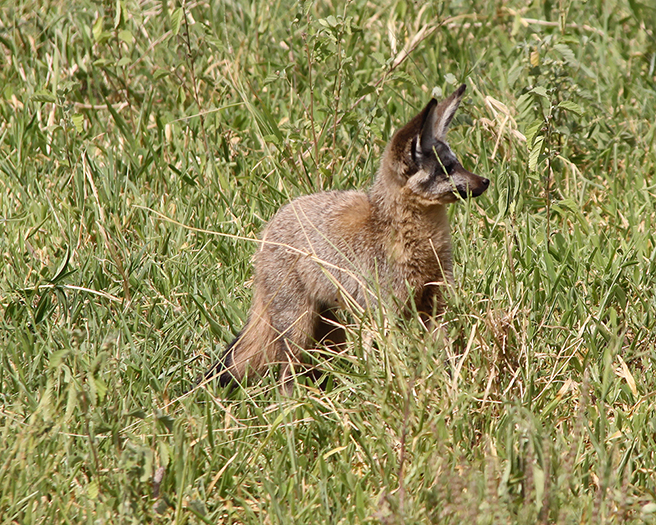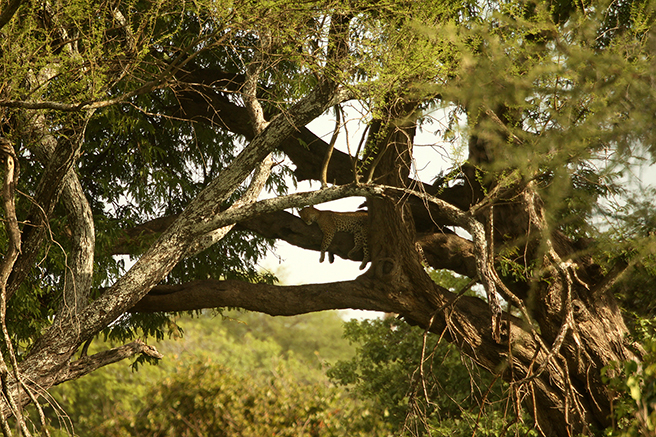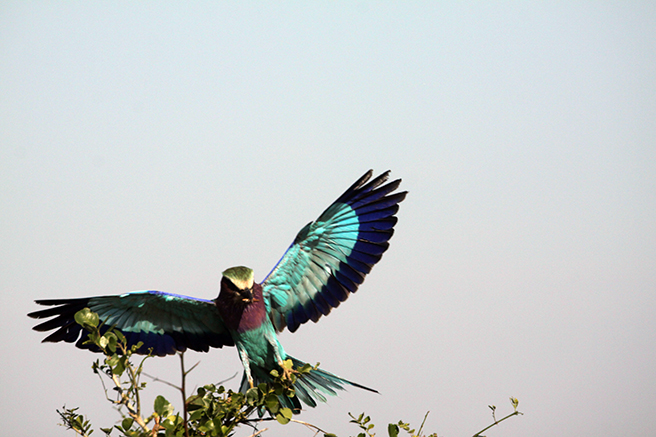Tarangire Continued

I won’t pretend to remember every animal or even species we saw every day, especially when it comes to birds, but here’s at least a partial look at our first afternoon of wildlife viewing.
Polly made the first sighting, a pair of bat-eared foxes, which tend to be nocturnal, so that was actually a really cool animal to see right off the, er, bat. (I know, I know, different kind of bat, but I couldn’t resist.)
After that, it was an embarrassment of riches (although, to be honest, I could say that about every day), with, among others, Masai giraffes, impala, the dwarf mongoose (one of the three species of mongoose we saw in the course of the trip), olive baboons, a lone elephant (our first, and you know what they say: a girl’s first time is always special *g*) and then an entire herd by the river, and warthogs. One of the amazing things about this trip wasn’t just that we saw so many species and so many individuals, but that we saw all kinds of fascinating behaviors. One of the warthogs we saw was backing into his burrow. And the reason he backed in was so if a predator came in after him, he would be facing forward and could use his formidable tusks to fight back. One other fun fact about warthogs: When they run they hold their skinny tails straight up in the air as a signal to other members of the group, and it looks so funny that it does a lot to counter the scary look of the tusks at the other end.
But where my luck really kicked in was with our two big carnivore sightings, because not only did we see a lion, we saw four. They were lying in the grass and staring intently into the distance, and it was easy to see why. There was a male impala on the hillside facing them, and they were no doubt thinking about how badly they wanted a late lunch and what the odds were of catching it.

And the came what had to be the day’s highlight, at least for me: a leopard. Leopards have incredible jaw strength and like to use it to drag their kills into trees, where their dinner – not to mention they themselves – will be safe from bigger or more dangerous carnivores, like lions (which can also climb trees, as you’ll see) and hyenas. Leopards are an elusive cat, and it doesn’t help that they spend a lot of their time up in the branches, hidden by leaves. They were also #2 on my hope-to-see list, right behind cheetahs and just ahead of servals. This shot was taken at quite a distance, and Stephen actually had to direct me where to look before I could even see it. And once I did, I could only marvel at how it managed to sleep so soundly without crashing to the ground.
I mentioned that we saw a lot of birds, and we did: the aptly named superb starling as well as the ashy starling, helmeted guinea fowl, ostriches (the male is black, to camouflage him as he protects the nest during the day, the females gray to hide them as they sit on the nest during the day), hammerkops (which have very weird heads and build huge nests), various kinds of hornbill and the utterly gorgeous lilac-breasted roller. I’m very proud of the fact that the next day I managed to get a couple of decent shots of one in flight, so with apologies for showing this slightly out of place, here’s my favorite as it comes in for a landing. They eat insects, lizards, snails…even small rodents. I think that’s an insect of some sort in its beak.

We arrived at our nyumba and were greeted by the staff with cold wet towels to wipe the dust from our faces and welcome glasses of juice to revive us. Then we were assigned to our tents and given some time to freshen up before dinner. I have to tell you, I loved staying in the tents – although I wish the solar lights had been brighter, because my vision stinks, so even with a headlamp it wasn’t always easy to read before bed. But other than that, they were like little hotel rooms in the woods, with nightstands and shelves and – best of all – showers! I can’t remember the last time I enjoyed a shower as much as I did that night. When it was getting on toward dinnertime we wandered up toward the dining tent and joined most of the group around the nightly fire. The smoke helped keep the bugs away – tsetse flies love me, a sentiment that is not returned – and it was a nice way to unwind with a glass of wine or a beer (or, if you’re me, a Coke) and talk about the day. Then it was time for our welcome dinner, which was also attended by a local bat.
A quick word about food: There was lots of it and it was good. Chicken and lamb, with some pork and beef, were the main meats, plus there were always lots of vegetables and every night a dessert. My favorite thing about dinner, though, was the fact that every night started with soup, and they were some of the best soups I’ve ever had. I was a particular fan of the several sweet potato and pumpkin soups they served.
Every night over dinner Stephen would give us a rundown of the basic plan for the next day, telling us what time to expect “Jambo, jambo,” or “Greetings, greetings,” the morning wake-up call, and when we needed to be ready for “wheels out.” I’ve never much liked my alarm clock, but I think I’d feel much more affection for it if it called out “Jambo, jambo” instead of buzzing nastily at me.
After that it was off to bed, where I generally typed up some quick notes (I travel with an AlphaSmart Neo for journaling, and I love it), read a little bit and then collapsed in exhaustion. Sometimes Polly and I would look through our pictures and talk about the day, but we faded out pretty quickly. It’s not physically strenuous to ride in a Rover all day – and I kind of enjoyed the bumpiness of the roads, because it made it very clear that I was Far From Home – but it is mentally exhausting to have your mind and eyes “on” all day, and since jambo, jambo was usually at 6:00 or 6:30, early to bed made a lot of sense.
Next up: Elephants, elephants and – yes, you guessed it – more elephants.